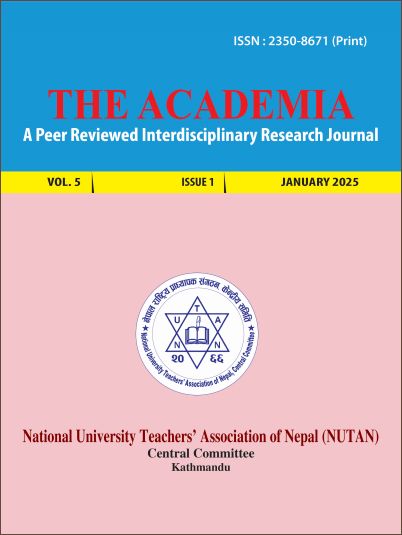Struggle for Subsistence in Laxmi Prasad Devkota's Muna Madan
DOI:
https://doi.org/10.3126/ta.v5i1.77185Keywords:
folk tradition, material condition, spiritualism, gender role, caste systemAbstract
This article explores social realism as depicted in Laxmi Prasad Devkota's Muna Madan. It aims to highlight the fundamentals of social reality of the time when Devkota composed this poem as revealed by the text's content. The article addresses the research problems concerning to the historic origin of the poem, social and economic reality of the time as depicted in the poem, the portrayal of the question of materialism and spiritualism, the question of gender role and caste system of Nepali society. Muna Madan is Devkota's most popular shorter narrative poem and the article seeks the reason behind its popularity among Nepali readers. The article adopts the theoretical framework of historical materialism. The historical materialistic analysis of the poem mirrors the true social and economic reality of the time when Devkota composed it. The application of this theoretical framework to the poem reveals its historical and social background. The findings of this article shows that Devkota borrows the framework of the poem from the folk tradition of Newari community of Kathmandu valley, the text depicts the true social and economic reality of the time, portrays the conflict between the materialism and spiritualism, emphasizes the traditional gender role and challenges the caste system of Nepali society.
Downloads
Downloads
Published
How to Cite
Issue
Section
License
Copyright (c) 2025 National University Teachers' Association of Nepal, Central Committee

This work is licensed under a Creative Commons Attribution-NonCommercial-NoDerivatives 4.0 International License.
This license enables reusers to copy and distribute the material in any medium or format in unadapted form only, for noncommercial purposes only, and only so long as attribution is given to the creator.




